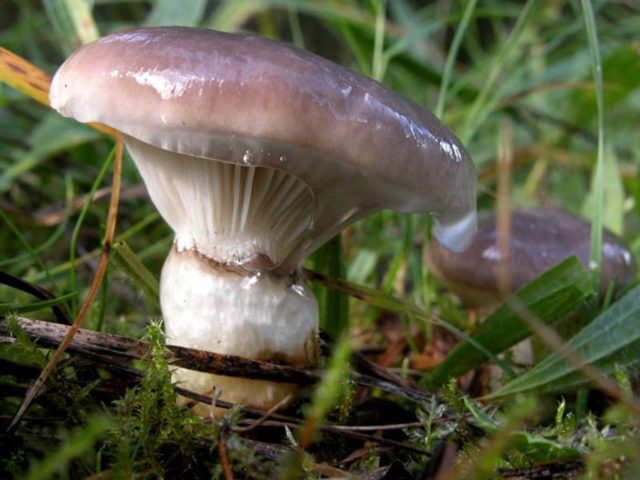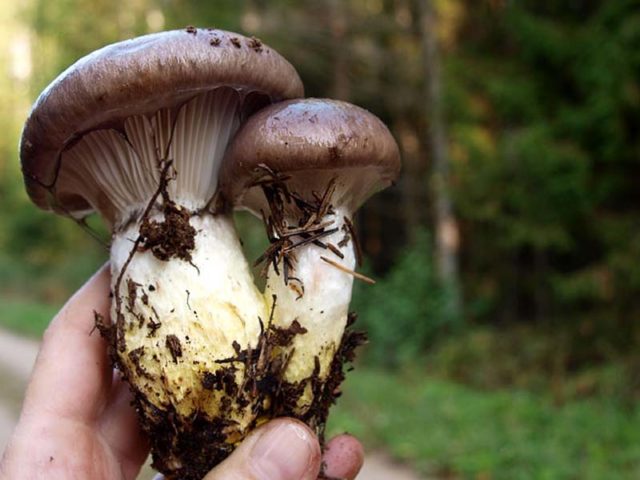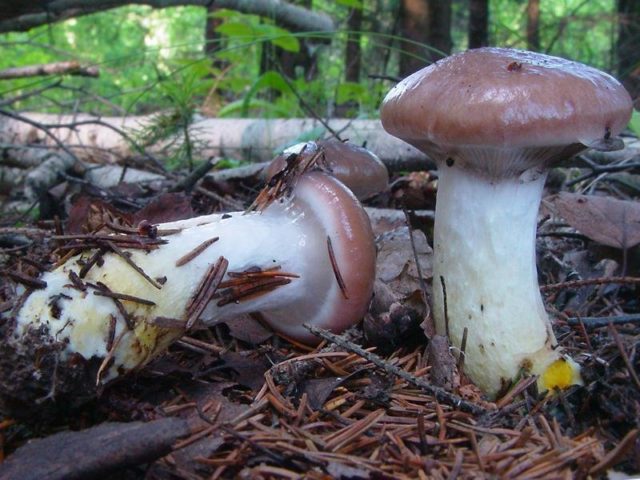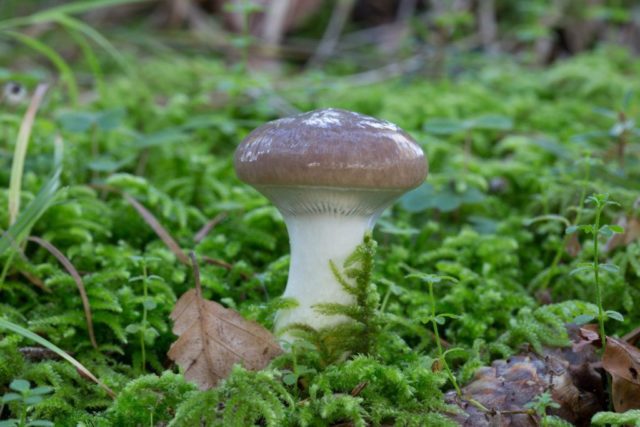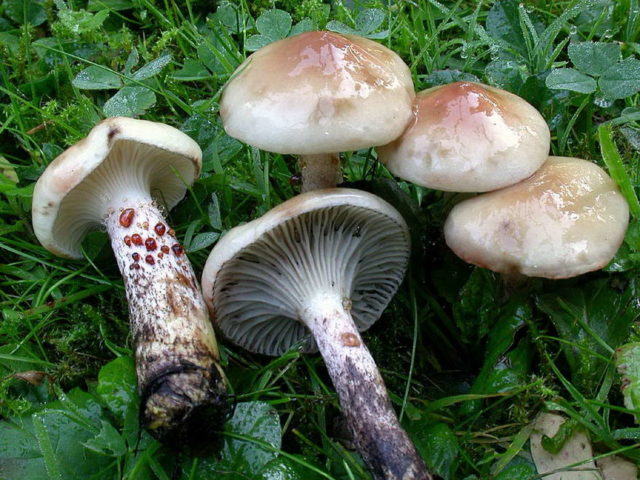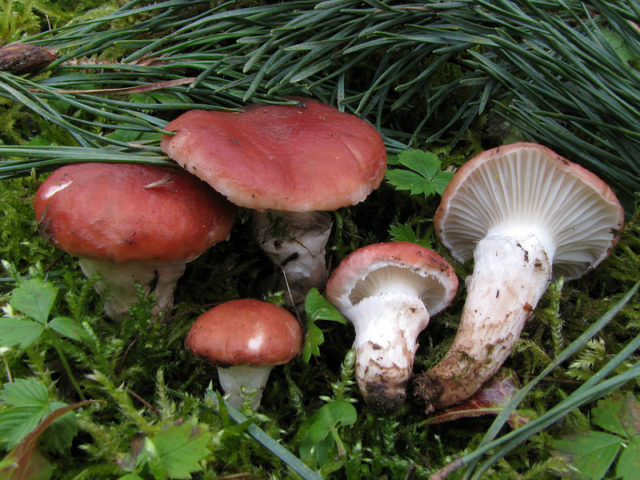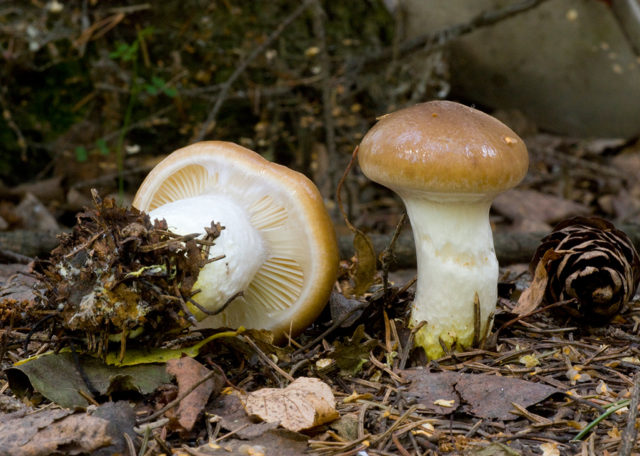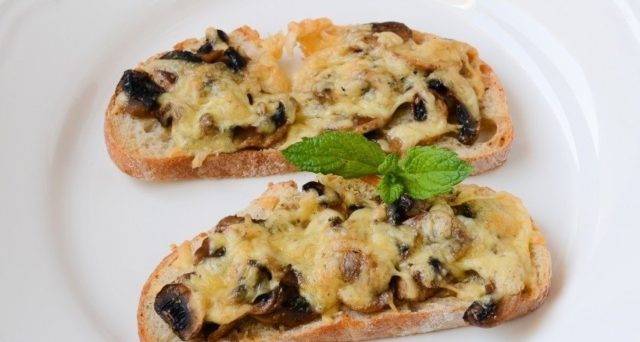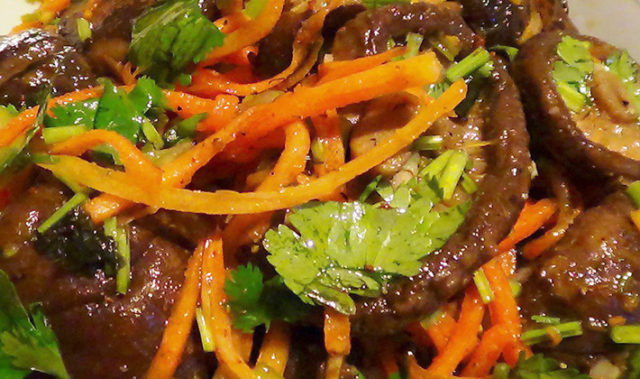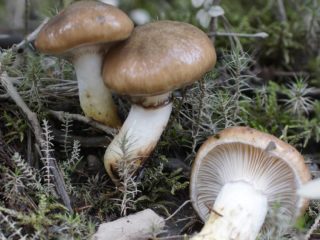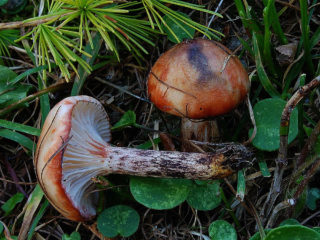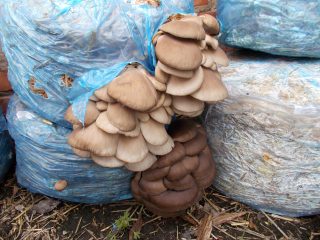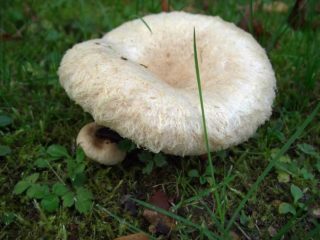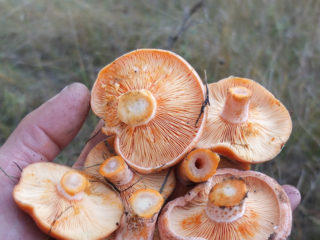Content
The mokrukha mushroom belongs to the genus of the same name and is an edible variety. Due to its non-standard appearance and resemblance to a toadstool, the culture is not in wide demand. It is rarely used in cooking, although the taste of the mushroom is comparable to boletus. A description of the moth with a photo will help you recognize it in the forest during the collection season.
What do mushrooms look like?
Mokrukha received its name because of the structural features: the fruiting bodies are covered with a mucous membrane, which is why the surface of their caps becomes slippery to the touch and therefore seems wet.
Young specimens have a thick mucous film, which, as the moth grows, breaks and slides towards the stem. And the descending white plates of the mushroom become black with age.
The hats of young moths are often convex or conical; in mature ones they take on a prostrate and depressed shape, with drooping brims. Depending on the type, the surface of the caps may be brown, gray, red or pink.The mushroom is characterized by a dense stalk, with a yellow tint at the base, which changes to grayish-white closer to the top.
Where do weevils grow?
The habitat of these mushrooms is the forests of the Northern Hemisphere. Common moths grow both singly and in groups in moss near pines, spruces and firs. This variety prefers calcareous soils, elevated areas and thinned forest plantations. Most often, mothweed can be found next to boletus.
In Russia, the mushroom is distributed only in Siberia, the Far East and the North Caucasus.
You can find out more information about the mokrukha mushroom from the video:
Types of moths
There are many types of moths, each of which differs in appearance and structural features. Even experienced mushroom pickers will find useful information about the differences between the most common members of the family.
Spruce weed (Gomphidius glutinosus)
It also has other names - sticky weevil, slug. The shape of the mushroom is hemispherical, the flesh is fleshy. The hat is spread out, with a tucked edge and a depressed center. It can be gray, grayish blue or grayish brown in color with purple edges and a light center. The diameter of the cap is from 4 to 10 cm. Its surface is mucous, with a characteristic shine. In old moths, you can see dark inclusions on the cap.
The flesh, white with a pinkish tint, becomes gray with age. Its taste is sweetish or sour, its aroma is mushroom, but not bright.
The stalk, swollen and thick in young specimens, acquires a cylindrical or club-shaped shape (from 1 to 2.5 cm in diameter) as the fungus grows. It grows from 5 to 11 cm, its surface becomes completely smooth. At the base there is a mucous ring.
Spruce moth can be found among the moss of coniferous and mixed forests, most often in groups with other representatives of the mushroom kingdom. It is widespread in the northern and central regions of Russia. Fruiting time occurs at the end of summer and ends by the beginning of October.
The species is classified as edible. You can eat mushrooms after 15 minutes of cooking. They are suitable for preparing sauces and side dishes for meat. Before cooking, mokrukha must be peeled and mucus removed from the stem.
Spotted moth (Gomphidius maculatus)
The mushroom is characterized by a convex cap from 3 to 7 cm in diameter, which as it grows becomes denser or depressed, with a tucked edge. The pale mucous surface of the mucus has a pinkish-brown, grayish-ocher or yellowish tint. When pressed, the mucus darkens. The stem of the mushroom grows up to 11 cm, with a diameter of 1.5 cm. Its shape is cylindrical, its structure is fibrous, and the color from the top to the base changes from white to yellow.
Spotted mothweed is classified as an edible variety. The yellowish flesh of the mushroom turns red when cut.
Pink weedweed (Gomphidius roseus)
This species has a mucous hemispherical cap, which changes to a convex and dense cap with age. At the same time, the edges of the mokrukha become tucked in, and the coral shade is replaced by brick.
The length of the leg is 2.5-4 cm, thickness - 1.5-2 cm. At the base, the mushroom has a white-pink tint. On the upper part of the stalk there is a mucous ring. The aroma and sweetish taste of the mushroom are rather weakly expressed. Pink weed is common throughout Eurasia, but is rare. Belongs to the edible group.
More details about the rare pink variety of mushroom in the video:
Is it possible to eat mokruki
Mokrukha is one of the little-known edible mushrooms that are suitable for any type of culinary processing. The taste qualities of this culture are on a par with boletus. It is important to consider that the color of the mushroom changes to purple during heat treatment. The mucous skin must be peeled off before cooking.
Taste qualities of mokrukha mushroom
In cooking, spruce, pine, pink, spotted and felt moths are often used. There are also rarer species that are of great taste: Swiss and Siberian.
The fruiting body of the mushrooms has a sour taste. The nutritional value of the product is approximately 20 kcal per 100 g fresh. BZHU indicators:
- 0.9 g protein;
- 0.4 g fat;
- 3.2 g carbohydrates.
Benefits and harm to the body
Despite the lack of a pronounced taste, mokrukha has a number of beneficial properties for humans. Eating mushrooms helps improve memory, eliminate chronic fatigue and strengthen the body's defenses.
Mokrukha also helps in the fight against viral diseases, helps normalize hematopoietic processes and cell renewal. In folk medicine, the mushroom is actively used as a cure for migraines, headaches, insomnia and nervous system disorders. In cosmetology, mokruha-based products are used to give the epidermis elasticity, silkiness and firmness. Lotions and creams containing this gift of the forest are beneficial for oily skin: as a result, it becomes matte due to the narrowing of pores.
The mushroom also has a positive effect on the condition of the hair.A mask based on it prevents their loss, restores split ends, and eliminates dandruff. As a result, hair gains shine, elasticity and a healthy appearance.
Despite its many beneficial properties, consuming mokruha is strictly not recommended for people suffering from gastrointestinal diseases and gout. Mushrooms should also not be given to children: fiber and chitin are poorly absorbed by the child’s body. For persons with individual intolerance, it is important to remember about a possible allergic reaction. Moisture can also provoke Quincke's edema.
Collection rules
To avoid negative consequences, it is important to adhere to the basic rules for collecting moth:
- The cut of the mushroom must be made in the middle of the stem, then cover the mycelium with pine needles.
- It is strictly not recommended to collect moths near highways, military training grounds or chemical plants.
- It is best to give preference to young specimens, since old mushrooms tend to accumulate toxic substances.
- It is equally important to check the fruiting body for worms.
- Immediately after collection, it is important to heat-treat the mushrooms: at room temperature, the mushrooms quickly deteriorate.
- Can be stored in the refrigerator for no more than 24 hours. In this case, the fruiting bodies should be kept in clay or enamel containers.
How to cook mokruhi
Mokruhi can be salted, boiled, fried and dried. Mushrooms are used in the preparation of sauces, soups and even casseroles. Fruiting bodies are often used as a side dish for meat or fish dishes, and also as an original ingredient in appetizers and salads. Pickled mokruhi are also very popular.
Mokrukh recipes
There are many recipes for using mokrukha, among which everyone can find the most suitable option for themselves. Below are popular dishes.
Bachelor sandwich
One of the simplest recipes. To prepare it you will need:
- 2 toasted pieces of bread;
- 10 pieces. fresh wet ones;
- 10 g hard cheese;
- 1 tbsp. l. butter;
- some chopped greens.
Preparation procedure:
- Mushrooms must be thoroughly washed and free of mucus.
- After this, cut the pulp into small slices and place in a dry frying pan, let the mushrooms evaporate for a few minutes.
- Then add butter and continue frying for 5-6 minutes.
- Spread the bread cooked in the toaster with butter. Spread a thin layer of fried mokruki, sprinkle cheese and herbs on top.
- Place the sandwiches in the microwave for a few minutes to allow the cheese to melt.
Mokruhi in Korean
To prepare you need to take:
- 1 kg mokrukh;
- 2 onions;
- 200 g Korean carrots;
- 2 tbsp. l. sunflower oil.
Preparation steps:
- Mokruhi must be thoroughly washed, cleared of mucus, placed in a saucepan and boiled over medium heat for 10-15 minutes.
- Then strain off all the water and cut the pulp into small cubes.
- Then place the mushroom mixture in a heated frying pan and fry for 10 minutes.
- Add chopped onions to the mokrukha and keep on fire for another 2-3 minutes.
- Combine the resulting dressing with Korean carrots.
Omelette
Ingredients:
- 150 g prunes;
- 150 ml semi-dry wine;
- 1 tomato;
- 5 chicken eggs;
- finely chopped greens.
How to cook:
- Peel the mushrooms from the slimy skin, rinse thoroughly, cut into small slices and fry until the liquid evaporates.
- Finely chop the pre-soaked prunes and add to the mushroom mixture.
- 5 minutes later, pour wine into the pan and simmer until it evaporates completely.
- Finely chop the tomato and add to the preparation. Salt and pepper everything to taste.
- Using a whisk, beat the eggs and add a pinch of baking powder.
- Pour the egg mixture into the mushroom mixture and mix thoroughly.
- Keep the dish on the fire for 5-6 minutes, sprinkle with herbs on top.
Conclusion
Mokrukha mushroom is a rare edible representative of the forest kingdom, belonging to the fourth category of nutritional value. The variety lends itself easily to all types of culinary processing, but it is important to remember that it must be pre-boiled.
